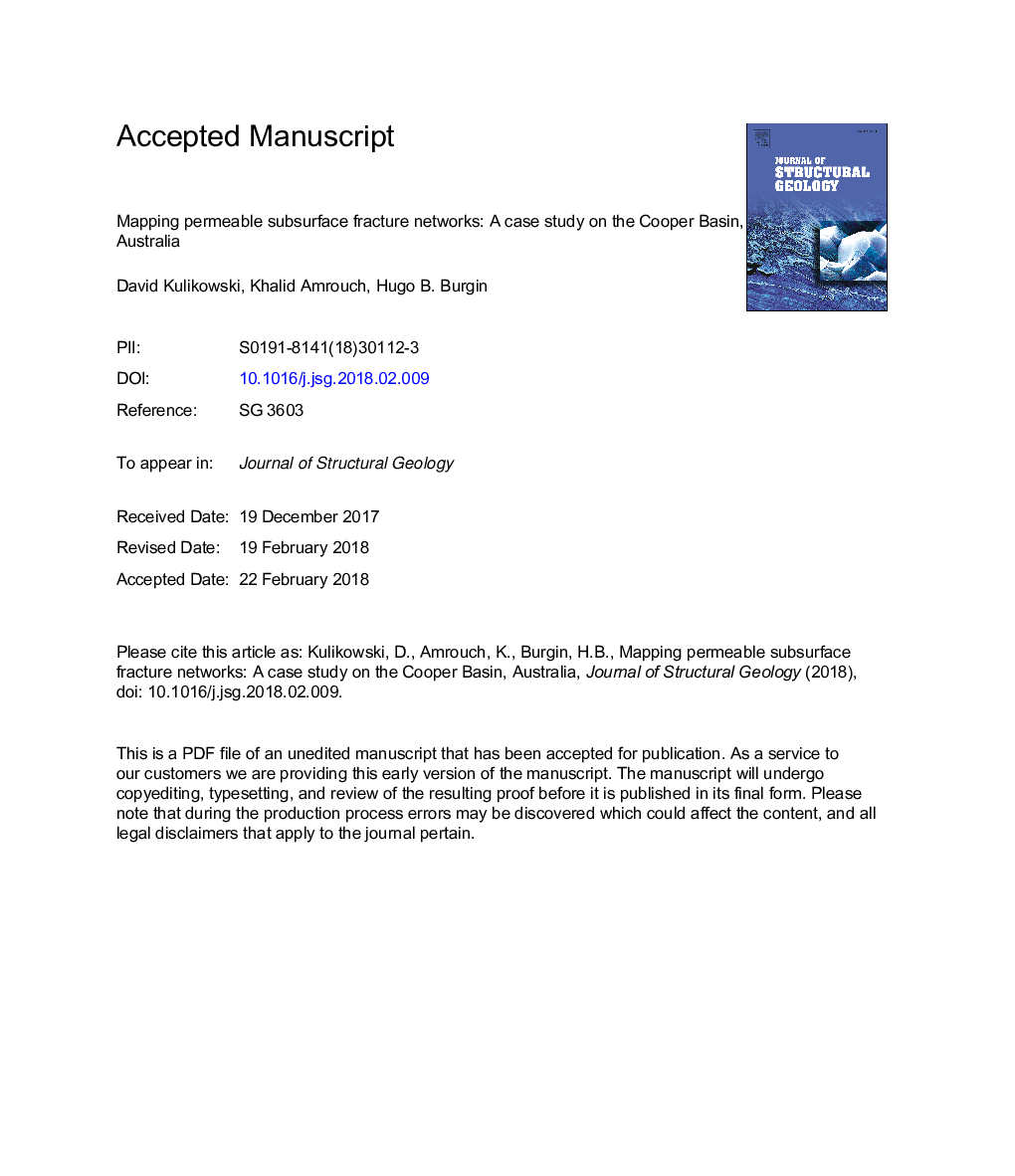| Article ID | Journal | Published Year | Pages | File Type |
|---|---|---|---|---|
| 10120767 | Journal of Structural Geology | 2018 | 30 Pages |
Abstract
The spatial distribution of permeable fracture networks is constrained in the subsurface Cooper Basin (Australia) through the integration of most positive curvature (K+) analysis of five three dimensional (3D) seismic surveys, wellbore fracture data, and geomechanical modelling. The K+ provides the likely distribution of subsurface extensional fractures based on the stress redistribution along the outer arc of an anticline. These results are reprocessed into the semblance (similarity) attribute to improve the signal-noise ratio prior to being extracted along the gas-rich and low permeability Patchawarra Formation. The subsurface fracture distribution maps show the geometry and density of extensional fractures that have been shown to facilitate fluid migration in this province, particularly those striking SE-NW and E-W, as these are properly oriented to undergo tensile reactivation. The density of these permeable SE-NW and E-W striking fracture sets is predicted to significantly increase along E-W elongate anticlines and may contribute to improved hydrocarbon recovery in this low permeability stratigraphic interval. We show that wellbore fracture data (nâ¯=â¯917) in the Patchawarra Formation presents a close relationship to K+ results and can be used to generate high density structural data in this basin, with the methodology applicable to other subsurface and offshore provinces.
Related Topics
Physical Sciences and Engineering
Earth and Planetary Sciences
Geology
Authors
David Kulikowski, Khalid Amrouch, Hugo B. Burgin,
